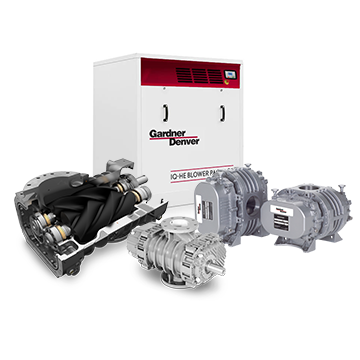
While the vast majority of our customers are looking for a direct replacement for an existing blower, or have engineers designing their new system who have made the calculations to determine the flow and pressure/vacuum required so then all we have to do is match the specs… we still get enough instances where a customer/engineering firm will pick a blower from a catalogue, order it and then complain to us about the results.
If you want to avoid being disappointed with a blower unit you’ve purchased then here are the three most common rookie mistakes:
Picking the Wrong Sized Blower
These clients will often select the smallest blower to provide the flow and pressure they require. This is often at the top end of the flow and pressure curves, and not the optimum performance point.
This results in higher than necessary power consumption and a shorter life for the blower. We are all too familiar with trying to save a little bit of money upfront and then it costs us over the long term with higher running costs, higher maintenance costs and lost productivity due to downtime.
We try to select a blower at approximately 85% of its maximum. This is the “sweet spot” for performance, life span of the blower and energy efficiency.
Someone Messed Up Their Calculations
We do see errors in the system calculations that can result in selecting the wrong blower. Failing to account for line losses in piping would be an example.
While there isn’t much you can do to after the horse has bolted except get in a blower that can do the job. You can always double-check your work and also double check your measurements, and also explain to us how you came up with your specifications so we can double check them for you.
When the Blower Doesn’t Do What It Says in the Brochure
We also see that clients forget to adjust their blower specifications for atmospheric conditions (elevation/atmospheric pressure, temperature, and humidity) when selecting the blower. Remember, the manufacturer’s literature show performance based on standard conditions (14.7 PSIA, 68 deg F, and 36% humidity).
For the record: At elevation you can use a smaller blower; at lower temps you can use a smaller blower; at lower humidity the air the blower has to push against is less dense so it can move more air.
Whatever happens we can help you by double checking your calculations and specifications before we recommend a blower for your system. Call 404-363-6000 or drop us a line at sales@pyebarker.com and we can review everything so that you don’t get short with your next blower purchase.


